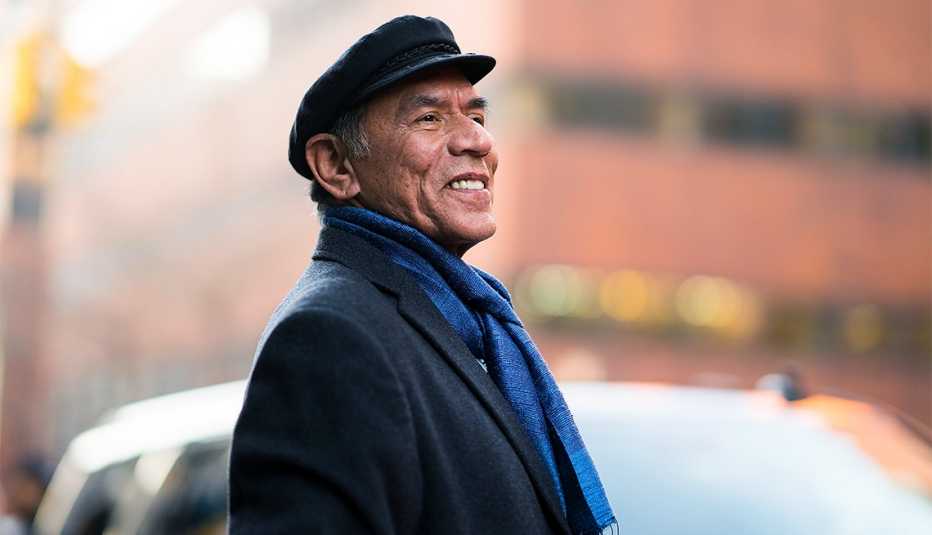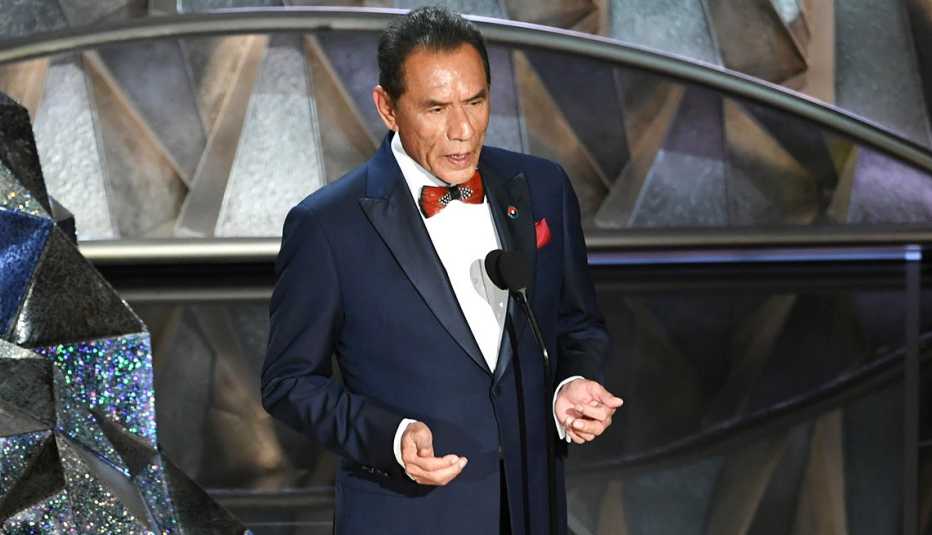AARP Hearing Center


Socialization starts early.
Actor Wes Studi, who starred in last year’s film Hostiles as a dying Cheyenne chief being escorted back to his Montana home by a reluctant white cavalry officer, is a boomer, born in 1947. And like all American boomers who grew up in the 1950s — the glory years of westerns in movies and on the TV screen — he played cowboys and Indians with neighborhood friends.
Studi grew up surrounded by his Cherokee family and friends in Oklahoma, yet he recalls that when the children played, “We all wanted to be the cowboy.” Nobody wanted to be the Indian.
“It’s not a good thing,” he tells AARP from his home in Santa Fe, N.M. “It was counterproductive.”
Likewise, Hollywood’s habit of casting white actors in starring roles was also counterproductive. As a kid, Studi says he wasn’t aware of the racial inequities in the country. But he added, “I do remember one thing: That was the matter of seeing actors like Tony Curtis [playing Pima World War II hero Ira Hayes] and Chuck Connors playing Geronimo.”
Studi knew even as a child that those stars weren’t reflections of himself. “I remember what most affected me was there was something extremely wrong here, because they were not identifiable and really contrasted with any of the real-looking Indians who were usually standing behind them. It gave me almost a nauseous feeling. I couldn't describe it to you now, but it wasn't a pleasant reaction.”
The one productive portrayal that he could relate to was the Lone Ranger’s “faithful Indian companion Tonto,” played by Mohawk actor Jay Silverheels during the television show’s run from 1949 to 1957. “In my own personal history, there was Jay Silverheels. He was the shining star, and he was working. As far back as I can remember, that's the only person we had in there,” Studi says.


































































More From AARP
It's Never Too Late for Your First Kiss
Stars Dale Dickey and Wes Studi get theirs in 'A Love Song'
Wes Studi to Get Lifetime Achievement Oscar
Only second Native American recognized by Academy for acting8 Essential Films of the Native American Experience
Step beyond stereotype and toward truths with these dramas, documentaries and comedies